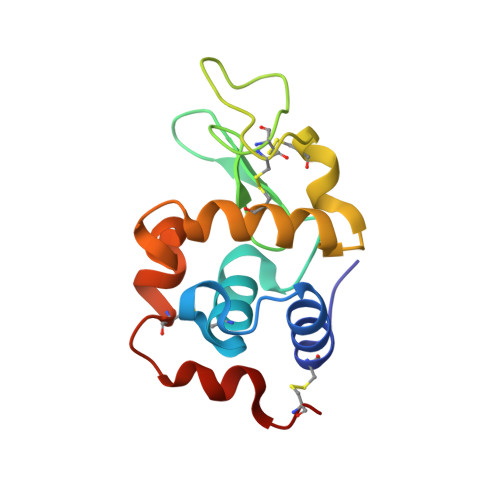Use of europium ions for SAD phasing of Lysozyme at the Cu Kalpha wavelength
Vijayakumar, B., Velmurugan, D.(2013) Acta Crystallogr Sect F Struct Biol Cryst Commun 69: 20-24
- PubMed: 23295480
- DOI: https://doi.org/10.1107/S1744309112047562
- Primary Citation of Related Structures:
4H1P - PubMed Abstract:
Europium is shown to be a good anomalous scatterer in SAD phasing for solving the structure of biological macromolecules. The large value of the anomalous contribution of europium, f'' = 11.17 e(-), at the Cu Kα wavelength is an advantage in de novo phasing and automated model building. Tetragonal crystals of hen egg-white lysozyme (HEWL) incorporating europium(III) chloride (50 mM) were obtained which diffracted to a resolution of 2.3 Å at a wavelength of 1.54 Å (Cu Kα). The master data set (360° frames) was split and analyzed for anomalous signal-to-noise ratio, multiplicity, completeness, SAD phasing and automated building. The structure solution and model building of the split data sets were carried out using phenix.autosol and phenix.autobuild. The contributions of the Eu ions to SAD phasing using in-house data collection are discussed. This study revealed successful lysozyme phasing by SAD using laboratory-source data involving Eu ions, which are mainly coordinated by the side chains of Asn46, Asp52 and Asp101 together with some water molecules.
Organizational Affiliation:
Centre of Advanced Study in Crystallography and Biophysics, University of Madras, Maraimalai Guindy Campus, Chennai 600 025, India.

















